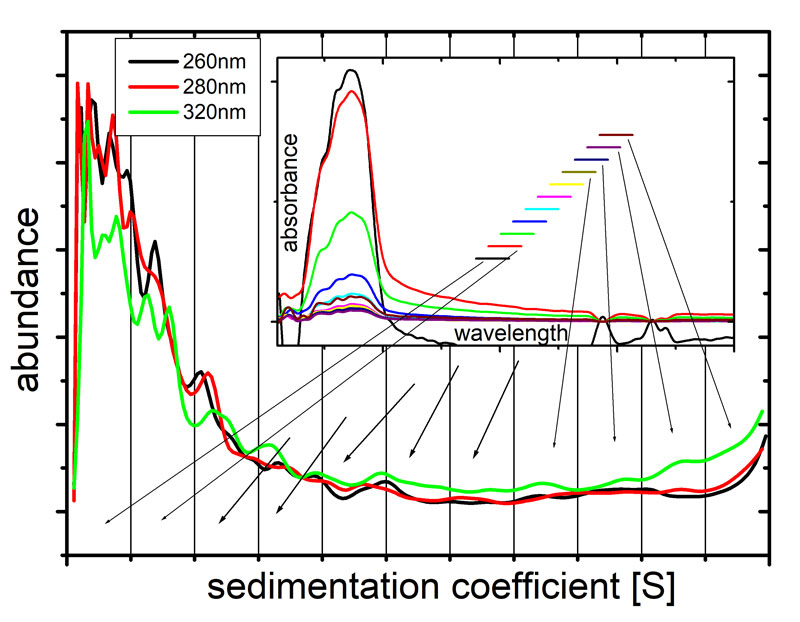
Exosomes are natural, cell-derived vesicles, playing an important part in intercellular communication of higher organisms. They transfer nucleic acids, proteins and other biological messages between cells, which makes exosomes an interesting approach for targeted drug delivery, including engineered exosomes used for encapsulation of therapeutic agents. The size of various types of EVs is extraordinarily heterogeneous with diameters ranging from approximately 40 nm up to 10 µm.
Exosomes are typically produced in low concentrations only, and purification is challenging. The product is a polydisperse mixture of active product vesicles. Extended characterization is required to qualify the process and product, to show product comparability, and allow process improvements, scale-up and validation.
Analytical ultracentrifugation is a powerful method for the analysis of these complex mixtures. Nanolytics offers extensive experience in exploiting the full range of particle sizes, covering the various subtypes of EVs for characterization. For further characterization of EVs including their cargos, full absorbance spectra from 4D-AUC are extracted. Nanolytics’ team is experienced in tackling these challenging systems.
CASE STUDY: Extracellular vesicles (EVs)
The case study shows a system of extracellular vesicles analysed with 4D-AUC via sedimentation velocity.
EVs covering a large sedimentation coefficient range (several orders of magnitude) are detected. Additionally, a significant residual absorbance is dedicated to non-sedimenting material.
This huge size range demonstrates the presence of various types of EVs.
The absorbance spectra are characteristic for a mixture of proteins and nucleic acids: In line with the A260 nm/A280 nm ratio near unity within the complete sedimentation coefficient range, both proteins and nucleic acids are indicated as major cargo components. A significant absorbance at wavelengths above 300 nm can be attributed to very large particles causing extinction as a consequence of scattered light.


